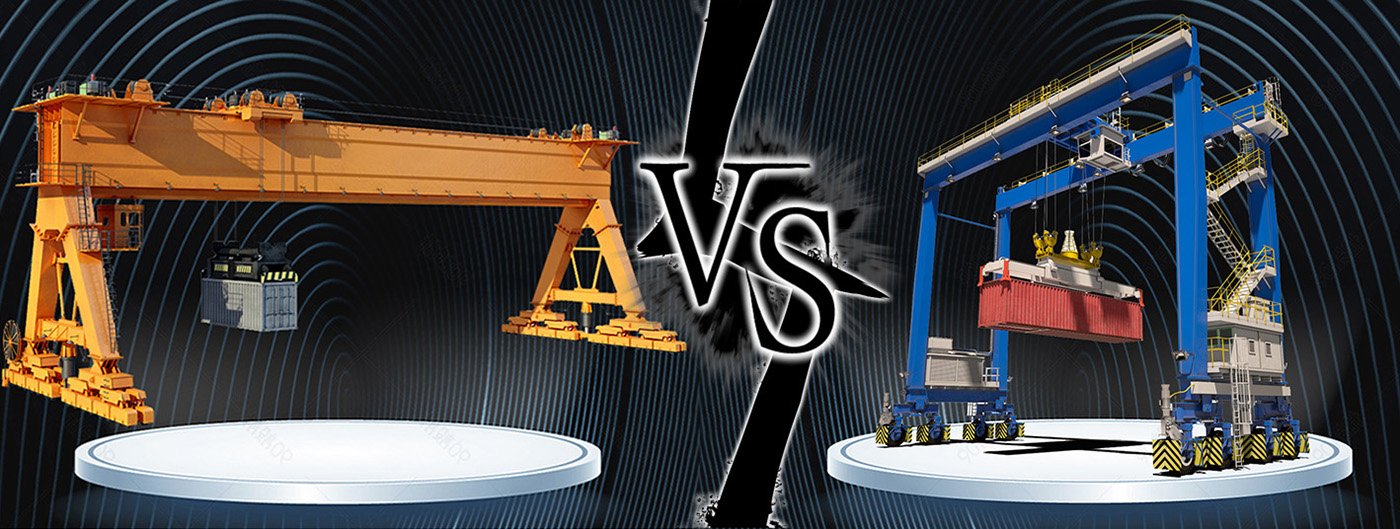Rail Mounted Gantry Crane
vs. Rubber Tyred Gantry Crane:
A Comparative Analysis
Port operations rely heavily on various types of cranes for efficient container handling. Two commonly used cranes are the Rail Mounted Gantry Crane (RMG) and the Rubber Tyred Gantry Crane (RTG). In this article, we will explore the structural features of these cranes, analyze their respective applications and advantages, and provide insightful purchasing recommendations for customers.
The RMG crane is supported by rails, which allow it to move along a predetermined track. It typically operates in a fixed transverse direction and can span multiple container rows. This type of crane is ideal for large-scale operations and offers excellent stability and lifting capacity. The rail-mounted system ensures precise container positioning and aids in reducing operational errors.
Unlike the RMG crane, the RTG crane is equipped with rubber tires, which gives it outstanding mobility. Its ability to move in any direction facilitates the handling of containers in tight spaces and irregular port layouts. The RTG crane consists of a container spreader for lifting and a trolley mechanism for horizontal container movements. The flexibility provided by the rubber tires allows for quick and efficient repositioning of containers within the yard.
The fixed track system of the RMG crane makes it highly suitable for large ports with consistent container layouts. Operating in a straight line, it can handle multiple containers simultaneously, significantly improving productivity. The RMG crane's robust structure enables it to handle heavy loads, making it ideal for ports dealing with oversized or heavy cargo. Additionally, the rail-mounted configuration ensures greater precision and accuracy during container handling operations.
The RTG crane's mobility and flexibility make it the preferred choice for smaller ports and terminals with irregular layouts. Its ability to move in any direction allows it to adapt to changing container arrangements swiftly. This enables efficient handling in congested environments where space is limited. The rubber tires of the RTG crane are designed to minimize ground pressure, making it suitable for ports with weaker or softer ground conditions. Furthermore, the RTG crane can prioritize repositioning and yard management, reducing congestion and improving overall operational efficiency.
When considering the type of crane to purchase, several factors need to be taken into account. For ports with a consistent and uniform layout, an RMG crane would be a suitable choice. Its robust construction, heavy lifting capabilities, and precise positioning make it an excellent investment for larger-scale operations.
However, for ports with limited space, irregular layouts, or softer ground conditions, an RTG crane would be more advantageous. The flexibility and maneuverability offered by the rubber tires enable efficient container handling in tight spaces. Furthermore, the reduced ground pressure minimizes the impact on the port's infrastructure.
In conclusion, both the RMG and RTG cranes have their unique strengths and applications in the port industry. Understanding the structural features, advantages, and suitable scenarios of each type is essential for making an informed purchasing decision. By carefully assessing the specific needs and constraints of the port, customers can select the most appropriate crane to enhance operational efficiency and productivity.

Post time: Sep-08-2023







